Aquamarine is the soft pale blue variety of the Beryl family of gemstones, which also includes Morganite, Goshenite, Yellow Beryl and Emerald. One of the most popular blue gemstones, Aquamarine is steeped in myth and legend. Known as the gem of the sea, even the name ‘Aquamarine’ comes from the Latin ‘aqua’ for ‘water’ and ‘marina’ for ‘of the sea’. Aquamarine can have wonderful clarity, meaning that it dazzles with a bright, energetic sparkle.
THE HISTORY OF AQUAMARINE
It is easy to see why Aquamarine has always been associated with the sea. Used in jewelry since at least 500 BC, its tropical ocean blue tones effortlessly invoke images of landless skies and the waters below. Once believed to be the treasure of mermaids, it was often worn by sailors and travellers as a talisman to protect against being shipwrecked and to ward off sea sickness. Pliny the Elder (23 AD - 79 AD) said of the gem, "The lovely Aquamarine, which seems to have come from some mermaid's treasure house, in the depths of the summer sea, has charms not to be denied".
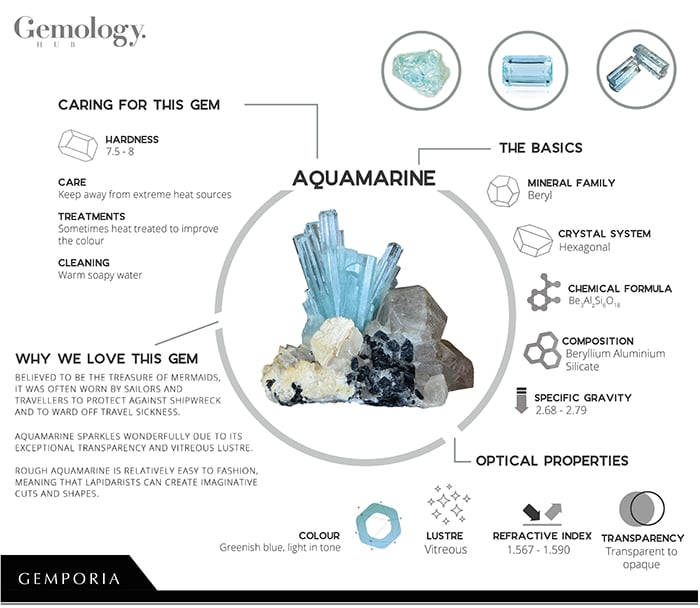
Many superstitions and legends told throughout the long history of Aquamarine relate to water and the oceans, one being that the qualities of the gem are especially strong when submerged in water. When Aquamarine's perceived powers appeared to dwindle, the gem would be placed in water on the night of a sparkling full moon in order to revitalise it.
In times gone by, as a very last resort, sailors caught in a storm were believed to have thrown their Aquamarines overboard in an attempt to calm the gods. The Romans and Greeks both revered the stone in this way, and thought of it as the 'sailor's gem'. The Romans even thought it could heal medical ailments of the throat, stomach and liver.
Back on dry land, Aquamarine was believed to both soothe and prolong relationships, and for this reason is often given as an anniversary gift way before its official listing for the 19th wedding anniversary. It was also once thought to render soldiers invincible, and was thus carried into battle as a stone of protection. This 'protection in battle' legend has been reinterpreted by some in the modern age as a form of protection during legal battles. It was also thought to bring rains when they were desperately needed, and even to curse enemies with drought.
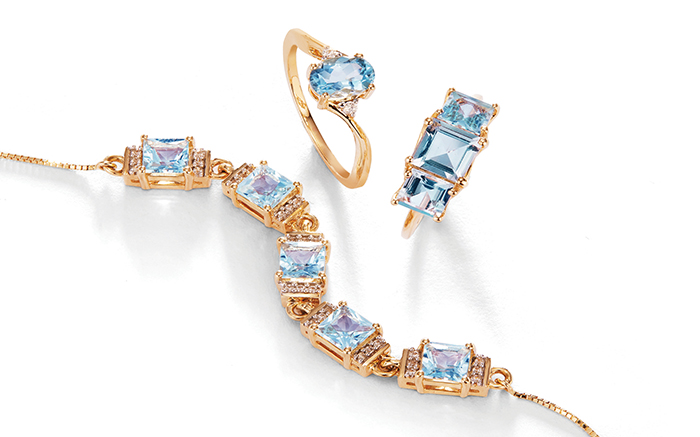
The biggest Aquamarine rough ever found weighed a staggering 110kg (243lbs). It was found in Brazil in 1910 and, when it was cut down into smaller faceted stones for use in jewelry, they collectively weighed over 100,000 carats. The world's biggest faceted Aquamarine is known as the 'Dom Pedro'. The exquisitely faceted piece is shaped like an obelisk, criss-crossed with diagonal detailing that gives it an otherworldly appearance. It weighs in at a staggering 10,363 carats, and can be viewed at the Smithsonian National Museum of Natural History in Washington DC.
At a monastery near the original Espirito Santo Aquamarine mine in Brazil, the monks call the gem the 'Divine Stone' and wear it in amulets, recognising the heavenly blue color’s calming influence during their hours of silence and meditation. Whichever variety you own or aspire to collect, Aquamarine is a prized blue gemstone with unparalleled clarity and a soft, delicate tone which radiates life, vibrancy and brilliance. Aquamarine is simply one of the world’s most popular and well-known gemstones, and is an essential addition to any gemstone and jewelry collection.
AQUAMARINE GEMSTONE INFORMATION
Aquamarine is both the birthstone for March and the official gemstone for the 19th wedding anniversary, exhibiting a hexagonal crystal system. Aquamarine is mostly found and mined in Brazil and countries that fall along the Mozambique geological belt in Africa, though there are a number of other sources. Darker shades of Aquamarine tend to be cloudier, whereas cleaner stones are often very light in hue. Most Aquamarine gemstones are faceted, but when cabochon cut they can occasionally display chatoyancy.
One of the most sought after of all Aquamarine varieties is from the Espirito Santo region of Brazil. Aquamarine from this region manages to possess a unique and intense brilliance that reflects off the internal facets, and exudes a compelling and extremely rare sparkle that dances throughout the stone. Although it is most famous for its glorious cool blue color, Aquamarine is sometimes found with delicate greenish hues. In recent times, it's been noted that the bluer the stone is, the more valuable it is (generally speaking). But as recently as the 19th century, it was the sea green colored stones that were sought after by the worlds collectors.

Aquamarine is a real favorite of many gem collectors. In a world that’s becoming more and more polluted, Aquamarine offers us a breath of fresh air, a reminder of the purity and beauty of untainted nature. Like all members of the Beryl family, Aquamarine's charismatic pale blue color is created by the presence of metallic elements - in this case, iron. Without these elements, pure Beryl remains colorless, and this variety is known as Goshenite.
Gemstones that are colored by nature in this way are known as allochromatic. Aquamarine’s younger sister in the Beryl family, Morganite, is colored by manganese, and its older and more complicated sister, Emerald, receives her personality from the presence of chromium, iron and vanadium.

Aquamarine is highly sought after for its clarity, transparency and undeniable calmness. Like Amethyst, where different shades are given different prefixes, Aquamarine also has a different prefix relating to its color. Santa Maria Aquamarine describes those with a deeper shade of blue than normal. The name is derived from the Santa Maria de Itabira gem mines of Brazil, where deep and vibrant Aquamarines have been found - not, as some people believe, from the name of the ship on which Christopher Columbus made his first cross Atlantic voyage, or indeed from Santa Maria city in California.
Similarly shaded stones from Mozambique are known as Santa Maria Africana Aquamarine. The largest source of Aquamarine is found in the state of Minas Gerais in south-east Brazil, but today Africa is becoming a strong rival, with mining activities in countries such as Madagascar, Mozambique, Nigeria and Tanzania. Additionally, pieces from Russian sources are highly sought after not only for their color, but also because the mines are now depleted.
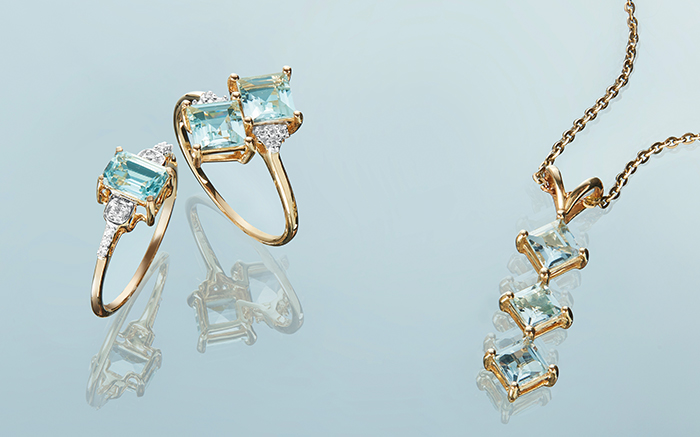
Aquamarine receives its color from the presence of two different types of iron: ferrous and ferric. Ferrous iron provides the gem with its trademark blue color, whilst the presence of ferric iron turns the gem slightly green. Normally in its rough state, when it is mined, Aquamarine is more of a greenish blue. To remove this secondary color, the rough is normally heat treated before it is sent for cutting, converting ferric iron to ferrous iron.
Unusually, as it does not take a high temperature to purify the color of Aquamarines, it is undetectable in nearly all laboratory tests. For this reason it is always best to assume that any Aquamarine you purchase has been heat treated. As the heat treating does not intensify the tone of the Aquamarine (it only turns its green hues to blue), some gem collectors prefer Aquamarines that feature their natural greenish blue color.
The darker an Aquamarine, the more desirable and valuable it becomes. Normally its tone ranges from just 10% to 30%. Some Aquamarines will appear almost colorless in normal daylight and yet display a beautiful tone under the light of a candle or a light bulb, so much so that it is sometimes known as an evening gemstone. Rough Aquamarine is relatively easy to work with too, so it offers lapidarists enhanced opportunities to craft with the stone and use more unusual (or even brand new) cuts and shapes.
AQUAMARINE CRYSTAL HEALING
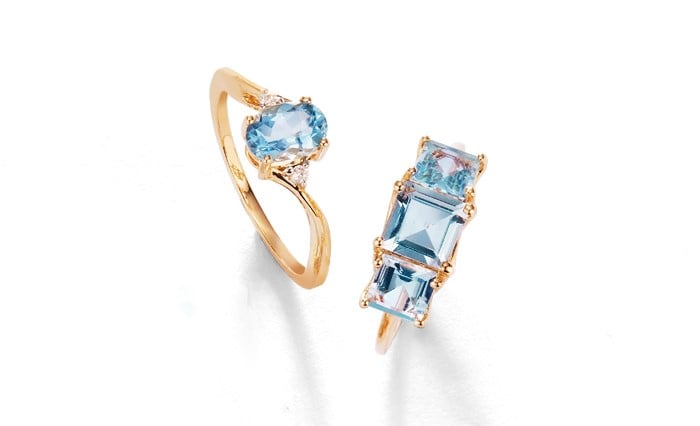
Gemstones are as old as time and, in the years since their first discovery, they've picked up a lot more than adoring collectors and fascinated mineralogists. Many have gained stories regarding their legend, lore and healing properties, and whilst there's no evidence to suggest that any of these properties are real, it's still interesting to explore the esoteric side of Mother Nature's miracles.
It's worth asking ourselves, "If you truly believe in something, does that mean it's true"? Scientifically, the answer is no, but what about on a more personal, spiritual level? If you really truly believe that an item in your house is having an effect on you, are you more likely to feel that effect? It's really not for us to say, but it's a very interesting concept that deserves further research.
Once again though, we must point out though that no studies have ever found any therapeutic effects or properties in gemstones, and the following is for your information only.
Because of its clarity and association with the sea, Aquamarine has long been associated with relaxation and with being soothing and protective. The stone is thought to keep us connected to the water - the origin of all life on the planet. As well as being associated with courage, faithfulness and friendship, it has been said to protect one from the negative influences of gossip and increase one's wisdom and happiness. It is also associated with the zodiac sign of Scorpio and the planet Neptune.
GEMOLOGICAL PROPERTIES OF AQUAMARINE
- Color Light blue (sometimes greenish blue)
- Family Beryl
- Mohs Scale Hardness 7.5 - 8
- Specific Gravity 2.68 - 2.79
- Refractive Index 1.567 - 1.590
- Lustre Vitreous
- Crystal System Hexagonal
- Transparency Transparent to opaque
- Chemical Formula Be3Al2Si6O18
- Composition Beryllium Aluminium Silicate
WHERE IS AQUAMARINE MINED?
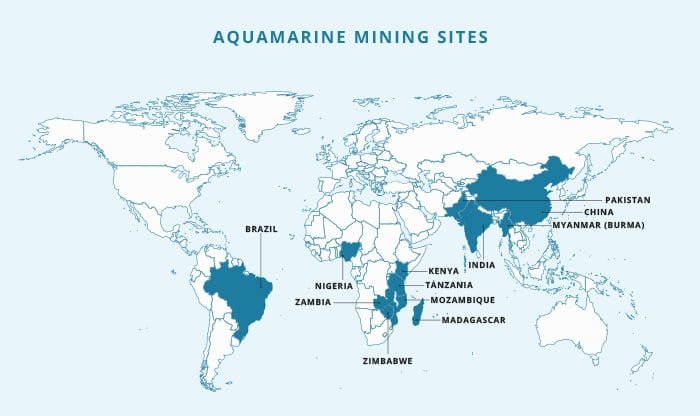
Our main mining locations for the Aquamarine used in Gemporia jewelry are Brazil and Mozambique. Our Aquamarine stones display the desired and vibrant pastel blue body color that has become synonymous with this gem, along with a breathtaking sparkle. Aquamarine can also be found in other African countries such as Zambia, Kenya, Tanzania and on the gemstone island itself, Madagascar. There is also a concentration of mining sites around Pakistan, India, China and Myanmar (Burma). It was also once mined in Russia, but these deposits are long depleted.
Here, we focus on three of the varieties of this very special stone that we are able to offer here at Gemporia.
AQUAMARINE VARIETIES

Espirito Santo Aquamarine is mined very close to the Santa Maria Aquamarine source in Brazil, and while it doesn't quite have the same depth of color it is certainly a deeper tone of Aquamarine than one would normally expect to find. This is one of the most sought after of all Aquamarine varieties and is named for the Espirito Santo region in which it is found.
Deeper colored Aquamarine stones like these often come with more inclusions, but not Espirito Santo gems. Aquamarine from this region displays the perfect balance of clarity and hue, giving a soft, feminine pastel blue color. The clarity of this Aquamarine lends the gem strong brilliance, and the sheer skill our incredible gem cutters apply to these rarities gives them a sparkle rarely seen in such a clear gem.
In short, this is simply a must-have variety for any gemstone enthusiast.
Espirito Santo Aquamarine

It took our team of gem hunters 18 months to secure a parcel of Pedra Azul Aquamarine, a process made all the more difficult by the fact that the location it is sourced from is a small artisanal mine, rather than a big commercial affair. The gentleman who supplied us has collected the stones over a period of ten years, and it remains one of the finest acquisitions we've ever made as a company. The strong sea blue color allows just the tiniest hint of green through which, when partnered with some of the most visually stunning internal brilliance we've ever witnessed, gives us the most perfectly balanced gemstone.
From the Minas Gerais region of Brazil, what name could be more fitting for such a perfect variety of Aquamarine than 'Pedra Azul'? It is the Portuguese for 'Blue Stone', and also the name of the small town from where it is sourced.
Pedra Azul Aquamarine

Demand for Aquamarine has always far outstripped supply, and whilst there is a wonderful diversity of Aquamarine colors across the various Brazilian sources, one word that can't be applied to their yield is 'plentiful'. Thankfully, since the mid to late 90s Mozambique and a small number of other African nations have been producing world-class quality Aquamarine with an impeccable clarity, a sublime tone of color and bountiful brilliance.
The stones we source from Mozambique display all these qualities, and yet one of the most remarkable things is that they're often not enhanced with heat treatment - so the color you see is totally natural. Recently, just as Mozambique Aquamarine was hitting its stride, availability suddenly fell; but, with our contacts in the region we will continue to do our best to bring you this African treasure.
Mozambique Aquamarine
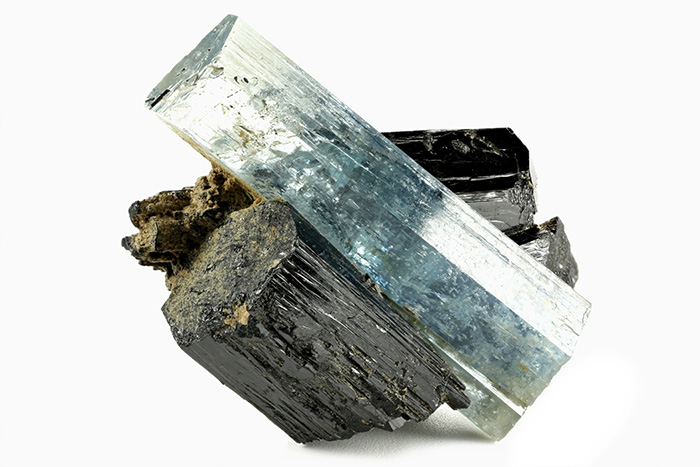
HOW TO CLEAN AQUAMARINE
Aquamarine is near the top of the hardness scale, so warm soapy water (mild washing up liquid will do the trick) and a soft brush or cloth should be sufficient to get your gem clean. Make sure to clean underneath the stone too, as tricky as this can be, as a build-up of dirt on the underside of the gem can dullen an otherwise bright, sparkly gem.
Jewelry Cleaning Methods
HOW TO CARE FOR AQUAMARINE
Keep Aquamarine stored away from any gem with a higher hardness on the Mohs scale as these could scratch your gem. Remember too that it will scratch other gems with a lower hardness. Keep Aquamarine away from heat exposure, as it doesn't take much heat on an Aquamarine to begin to permanently change the color.
Always put jewelry away when you aren't wearing it, and never wear pieces when doing household chores or gardening, etc. Caring for your Aquamarine jewelry will keep it looking its best for many years to come.
Jewelry Boxes
WHERE TO BUY AQUAMARINE
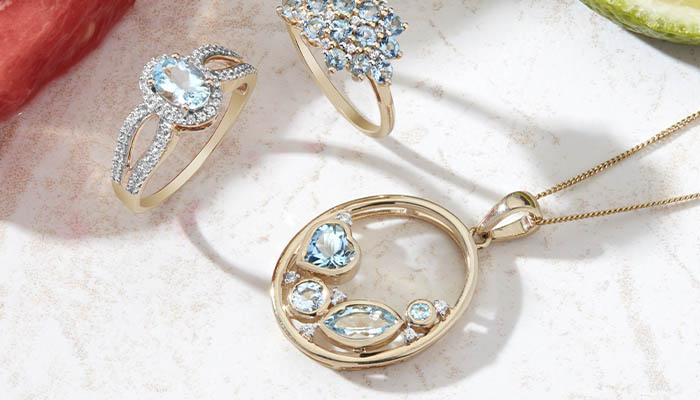
Whichever balance of hue, tone and saturation you personally prefer in Aquamarine, we hope you find a piece that truly speaks to you. From large statement solitaire pieces to playful clusters and tantalising trilogies, we have the perfect design for you.
We hope you enjoy wearing your piece, and we just know you'll get comments and compliments for such a lovely gemstone.
All Rings Earrings Necklaces Bracelets Pendants

